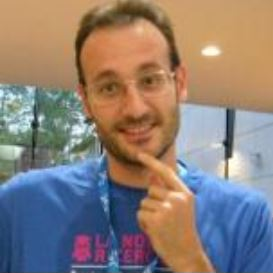Photogrammetry Meets AI
A special issue of Remote Sensing (ISSN 2072-4292). This special issue belongs to the section "AI Remote Sensing".
Deadline for manuscript submissions: 10 June 2024 | Viewed by 20374
Special Issue Editors
Interests: photogrammetry; laser scanning; optical metrology; 3D; AI; quality control
Special Issues, Collections and Topics in MDPI journals
2. Department of Electrical and Computer Engineering, The Ohio State University, Columbus, OH 43210, USA
Interests: data analytics; aerial/satellite photogrammetry; remote sensing; image processing; machine learning; 3D computer vision; 3D modeling/change detection; deformation analysis; unmanned aerial vehicles; image dense matching
Special Issues, Collections and Topics in MDPI journals
Special Issue Information
Dear Colleagues,
For many years, photogrammetry has been the leading methodology to derive 3D metric and accurate information from imagery, at different scales (from satellite to aerial, terrestrial and under water) and from different sensors (linear, frame, panoramic). The inclusion of computer vision and robotics solutions has increased the level of automation in image processing and 3D data generation, leading to mainstream automatic solutions and massive 3D digitization processes. The recent advent of artificial intelligence methods based on machine and deep learning approaches is again changing the photogrammetric processes leading to unexpected automated solutions that can truly revolutionize the mapping and 3D documentation sector.
This Special Issue wants to focus on this recent change for 3D geometric tasks, and is seeking high-quality papers that explore all the potentialities offered by AI in photogrammetric problems. Papers should report progresses in supporting, integrating and boosting key areas of photogrammetry with AI-based methods. In particular, the following topics should be addressed in the proposed submissions:
- Image matching and learning-based tie points extraction;
- Outlier removal;
- Structure from motion and bundle adjustment;
- Camera project loss and calibration;
- Simultaneous localization and mapping (SLAM) in the era of deep learning;
- Monocular depth estimation;
- Multi-view stereo (MVS) and dense point cloud generation with neural networks;
- 3D representation and reconstruction with neural radiance field (NeRF);
- Implicit methods for 3D representation from images and mesh reconstruction;
- 3D fusion of heterogenous datasets;
- Learning-based DSM inpainting;
- Point clouds editing, cleaning and filtering;
- Quantitative evaluations and analyses within applications.
Dr. Fabio Remondino
Dr. Rongjun Qin
Guest Editors
Manuscript Submission Information
Manuscripts should be submitted online at www.mdpi.com by registering and logging in to this website. Once you are registered, click here to go to the submission form. Manuscripts can be submitted until the deadline. All submissions that pass pre-check are peer-reviewed. Accepted papers will be published continuously in the journal (as soon as accepted) and will be listed together on the special issue website. Research articles, review articles as well as short communications are invited. For planned papers, a title and short abstract (about 100 words) can be sent to the Editorial Office for announcement on this website.
Submitted manuscripts should not have been published previously, nor be under consideration for publication elsewhere (except conference proceedings papers). All manuscripts are thoroughly refereed through a single-blind peer-review process. A guide for authors and other relevant information for submission of manuscripts is available on the Instructions for Authors page. Remote Sensing is an international peer-reviewed open access semimonthly journal published by MDPI.
Please visit the Instructions for Authors page before submitting a manuscript. The Article Processing Charge (APC) for publication in this open access journal is 2700 CHF (Swiss Francs). Submitted papers should be well formatted and use good English. Authors may use MDPI's English editing service prior to publication or during author revisions.
Keywords
- photogrammetry
- machine/deep learning
- structure from motion
- 3D reconstruction
- NeRF
- data integration and fusion
- quantitative analyses and comparisons






